An introduction of Composite Ver. Ka Cybaster's articulation design after focusing on its plain standing pose in the previous posting. ^^
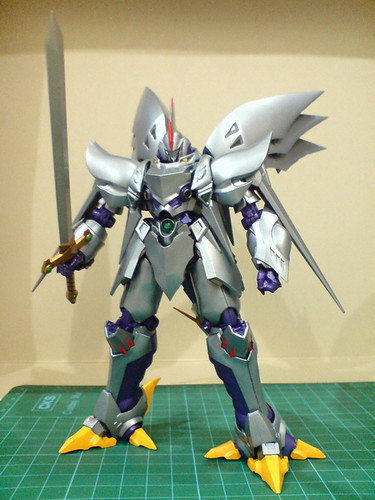
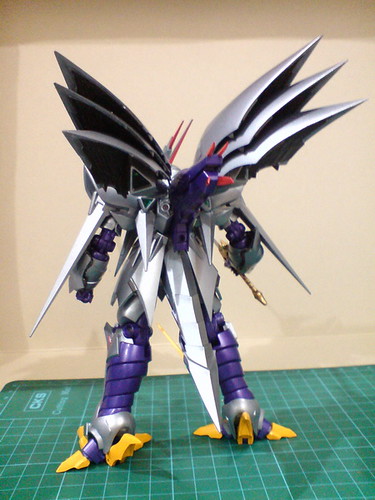
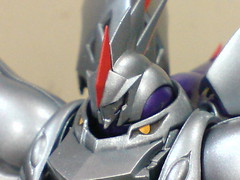
[Head]
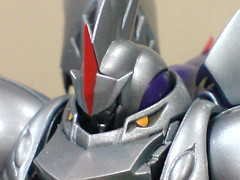
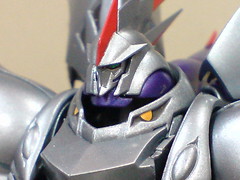
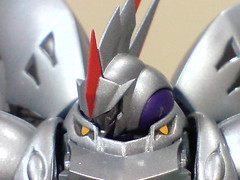
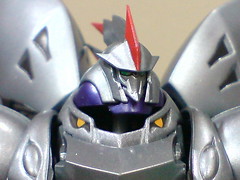
Despite sitting inside a seemingly tight spot, surrounded by its collar armor, the head can be turned to all direction very easily.
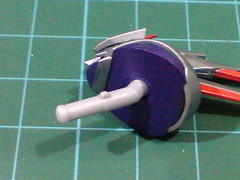
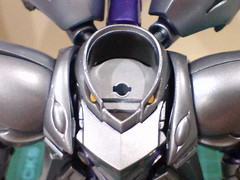
(Left) The neck joint is a long peg with a ball-type joint connecting to the head. The peg itself allows the head to be collapsed into the chest area for transformation. As you might have guessed, the tiny tabs on the middle of the peg act as stoppage points for transformation step.

[Shoulder blocks]
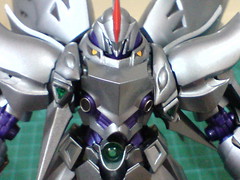
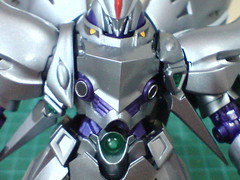
The shoulder blocks are actually separate pieces that can be hinged vertically on either side of the body.
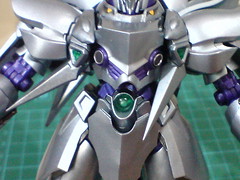

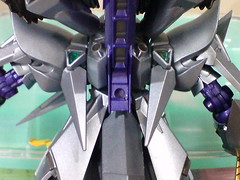
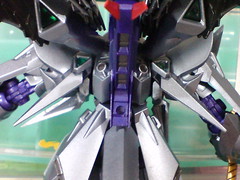
The front and rear spikes that are clipped onto their respective shoulder blocks can be hinged inward/outward easily.
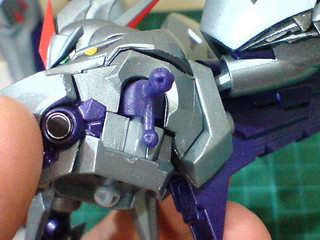
The shoulder block is removed to reveal the joint.
Three ball-type joints spotted: one connecting between the body and the joint, one for the upper arm, and the smallest one hanging on the bottom is for the shoulder ring. The design reminds me of High Grade 1/144 GN-X, and Gundam Exia. ^^
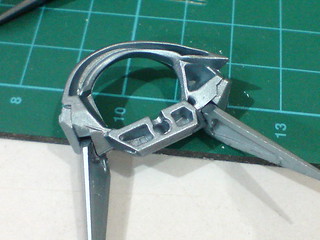
Rear view of the removed shoulder block.
The peg hole for the bottom joint, and connecting points of the clip-on spikes can be seen.
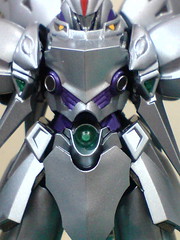
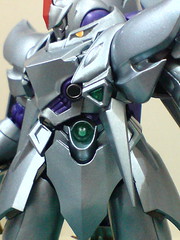
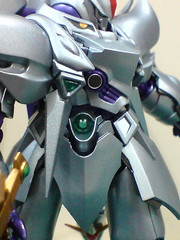
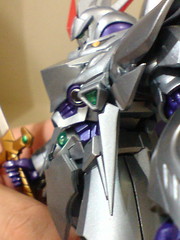

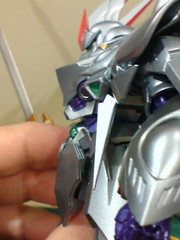
Side-to-side and forward bends are possible for the waist.
Bending the body backward however, is not possible at all, ...
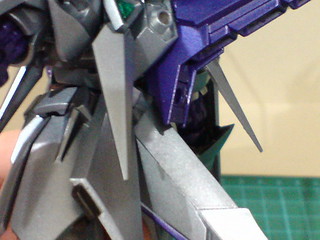
... as it's blocked by the collision between the backpack and the tail. ^^;


The upper body is removed to reveal the waist joint, which turns out to be ball-type joint slot on a bendable hinge.
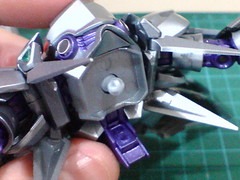
The corresponding ball-type joint beneath the body block.
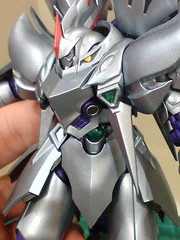
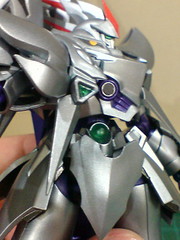
With adequate space between the connecting components, the waist's ball-type joint can be utilized to give the upper body a much wider range of bending. ^^
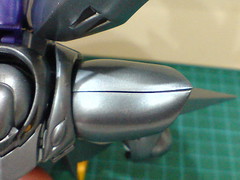
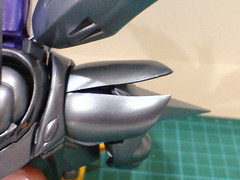
The shoulder armor can be split apart.

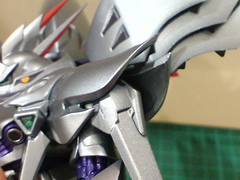
The separate shoulder armor pieces can be hinged vertically as well. ^^
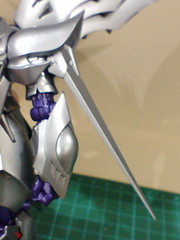
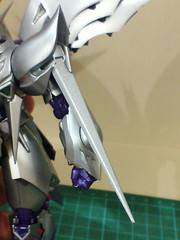
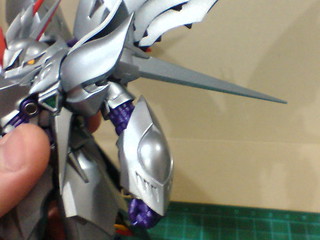
The shoulder spike can be bent forward/backward as well.

The shoulder spike is removed, revealing that its connecting joint to the shoulder joint is actually of ball-type.
The joint seems to be on an independant hinge that can allow it to be moved separately from the shoulder joint.
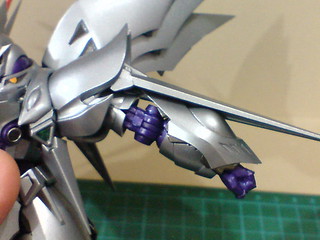
Rather limited upward lift for the shoulder from the side of the body. While the shoulder spike is movable on its own, all the shoulder components' inevitable "meeting" at the base puts a stop to said movement.
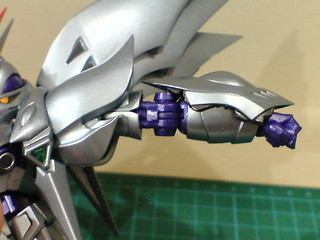
Slight improvement to the shoulder's upward lift when the shoulder spike is detached.
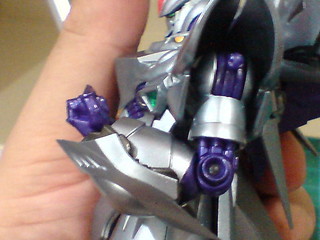
A little over 90 degrees for the elbow bend.
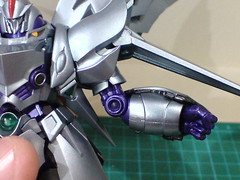

Bicep swivel.
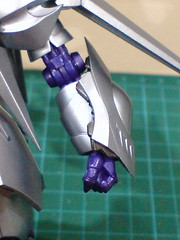

Not enough with the bicep swivel, the forearm can swivel around the elbow as well, giving the arm an extra articulation capability.
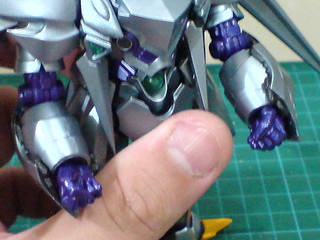
Ball-type joints for the wrist, although its movement isn't clearly visible due to the surrounding armor.
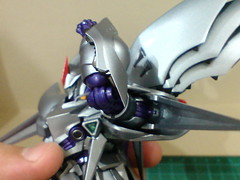
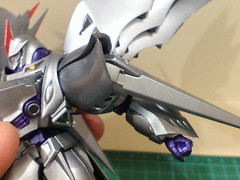
Swinging the arms forward/backward is very easy.
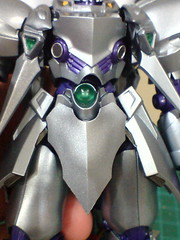

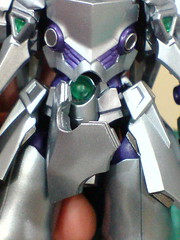
Thanks to a joint meant for the transformation, the front skirt armor can be tilted to all direction rather easily. It's more than the armor plate very needed I believe. ^^
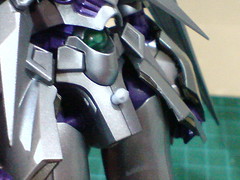
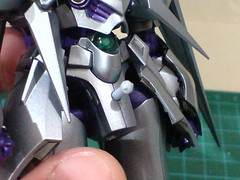
The ball-type joint that the front skirt armor connects to is already enough for some flexible articulation. The joint peg's ability to be extended gives the armor even more room for movement. ^^
It's a bit perverted in application. XD
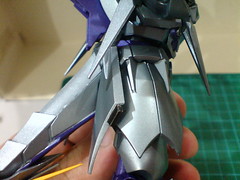
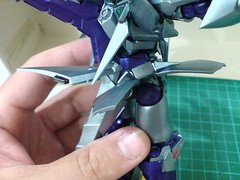
Either side of the waist has three side skirt armor plates that can be lifted for about 90 degrees.
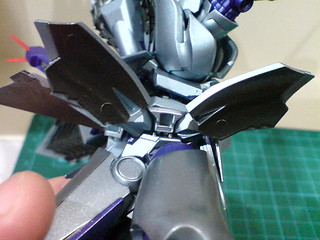
Bottom view of the skirt armor reveals the hinges of the split side pieces.
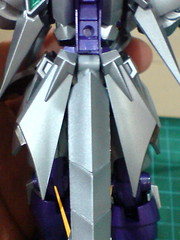

The rear skirt armors are actually on ball-type joints, which allow them to be bent inward.
I suppose they are designed with ball-type joints just so that they can be expanded to accommodate the tail unit, but the joints' flexibility does contribute to some additional articulation range that is more than what the armor needs. ^^
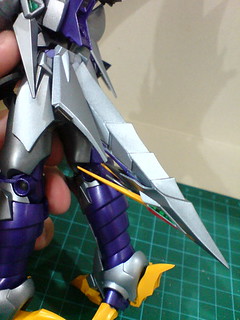
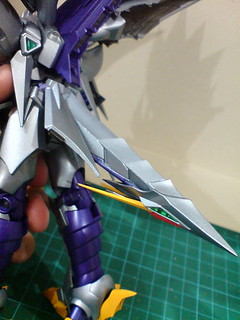
Very slight, almost undetectable hinge for the tail. ^^;
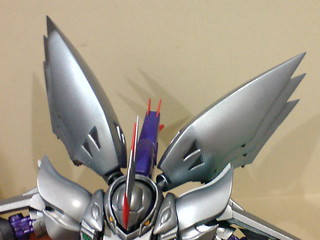
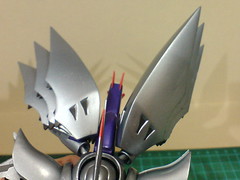
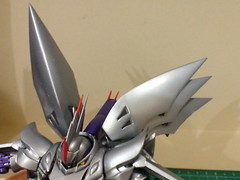
Ball-type joints allow the wings can be turned to all direction on either side of the back very easily. ^^
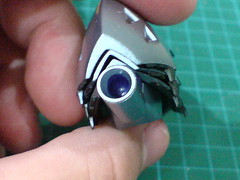
The ball-type joint port of the wing that wasn't shown in the previous posting.
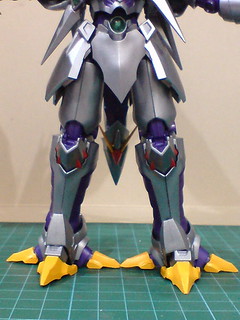
[Hips]

Ball-type joints for the hips, although they aren't really visible in the image above.
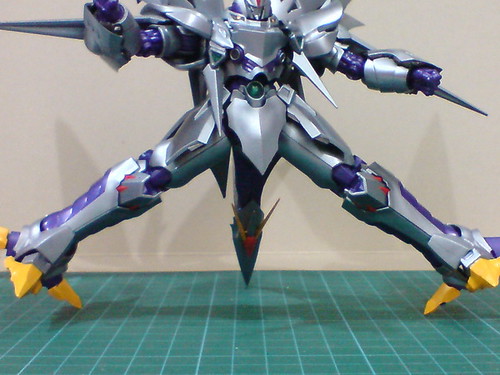
Very wide sideway expansion enabled by the hips' ball-type joints. ^^
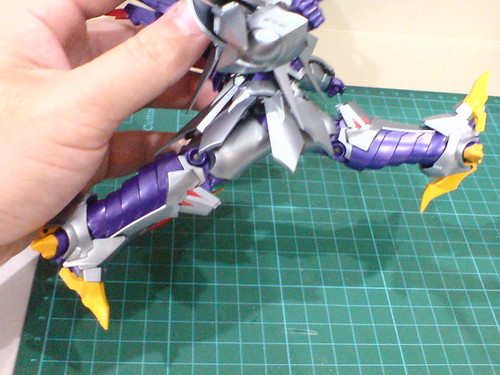
Equally impressive range of forward/backward bend.
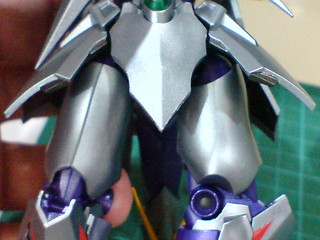
A nice bonus for the hips' articulation: separated thigh swivel. ^^
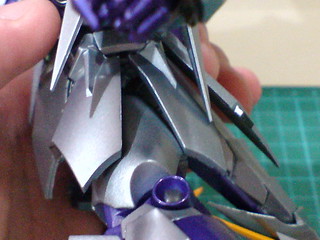
The side skirt armors' split is very useful in accommodating the thigh's upward bend.
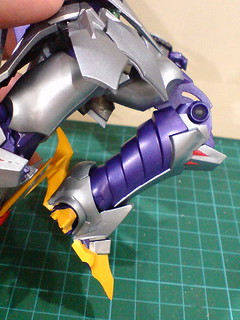
Standard articulation range for the knee.
While the knees' function is rather normal in robot mode, the way the knee joint is designed is very different from most other robot figures. ^^

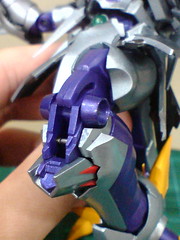
The exposed knee joint when it's bent.
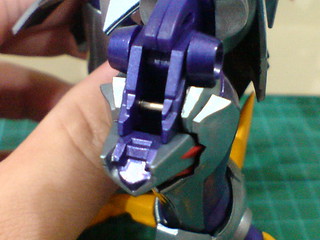
There's a metal pin inside the lower half of the knee joint, with function that isn't immediately clear to me. ^^;
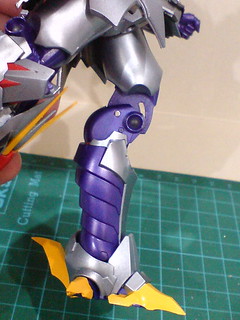
For the Cybird transformation, the knee can be extended, ...
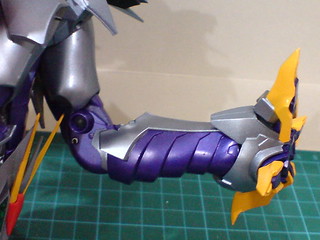
... and bent inversely.
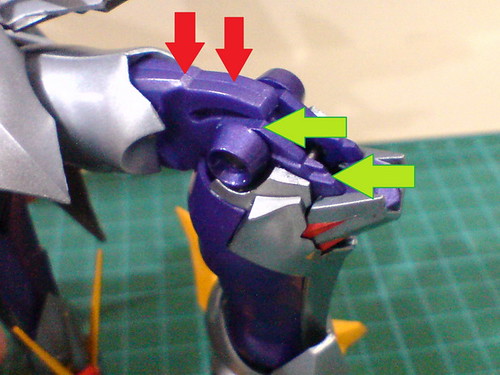
The sets of red and green arrows in the image above indicates separate knee joint sections. Each section has its own hinge joint that allows either the thigh, or lower leg to be bent.
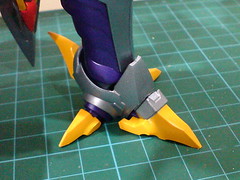
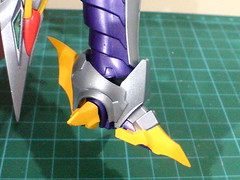
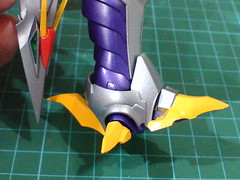
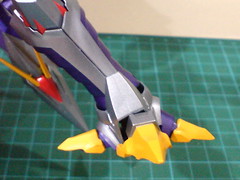
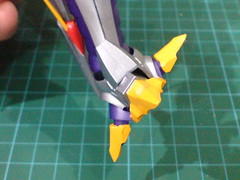
Ball-type joints allow the ankles can be turned to all direction very easily, despite having large ankle guards wrapping around the joints.
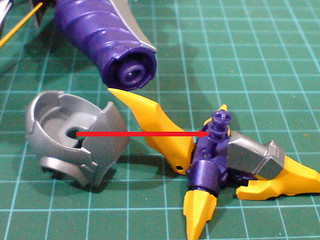
Components for the foot are taken apart to examine how they work.
The armor tabs onto the back of the ankle joint, showing that its movement is dictated by the ankle tilt.
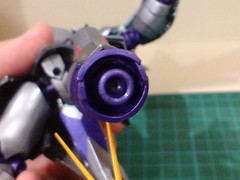
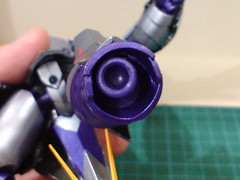
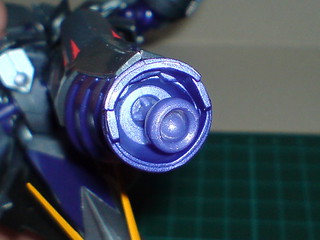
The ball-type joint port beneath the shin is on a ball-type joint itself. ^^
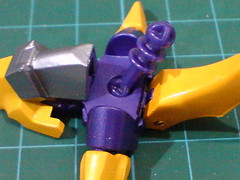
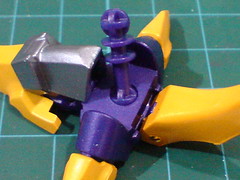
The bottom point of the ankle joint is of ball-type as well.
In other words, the entire ankle joint is actually made up of three ball-type joints. How's that for flexible movement? ^^
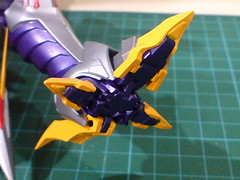
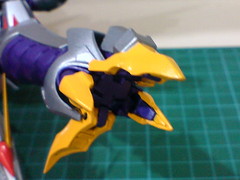
The front and side talons on each foot can be hinged downward.
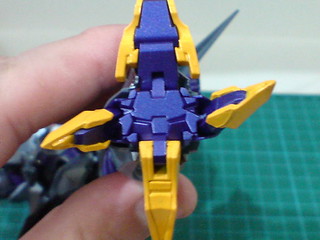
The two side talons are connected to either foot via ball-type joints, which allow them to be rotated around the base pretty freely. ^^
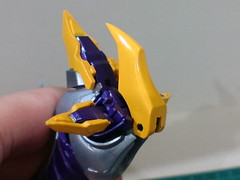
The heel talong can be hinged downward for a wide degree.

Getting the heel talon to go pass the edge of the base can be a bit difficult. I detected a very minor stress mark on the hinge from the many attempts in bending the talon downward. ^^
Fortunately, the heel talon's hinge movement is mostly meant for the Cybird transformation, so it's not a frequently needed articulation point.
Like its pose for display shown in the previous posting, the articulation capabilities designed for this Composite Ver. Ka figure is amazing. Everything that seems to be movable, can be indeed be moved, with some of them feature bonus articulation capabilities as well. ^^
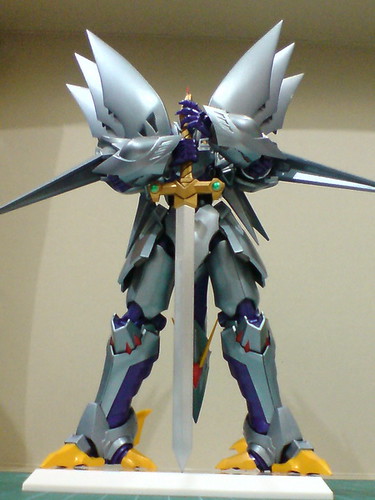
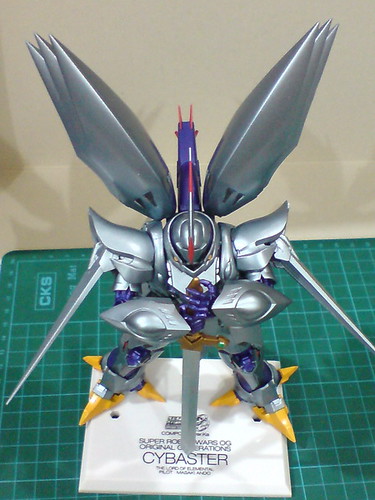
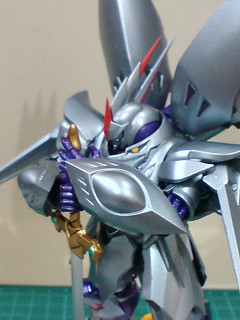
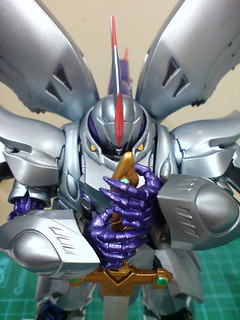
Action poses of Composite Ver. Ka Cybaster, utilizing the articulation design introduced earlier on will be up in the next posting. ^^




No comments:
Post a Comment